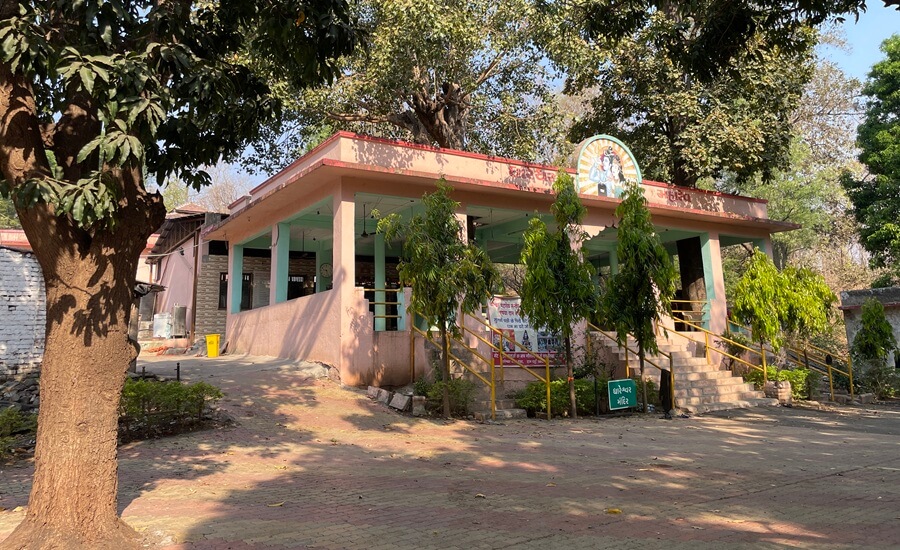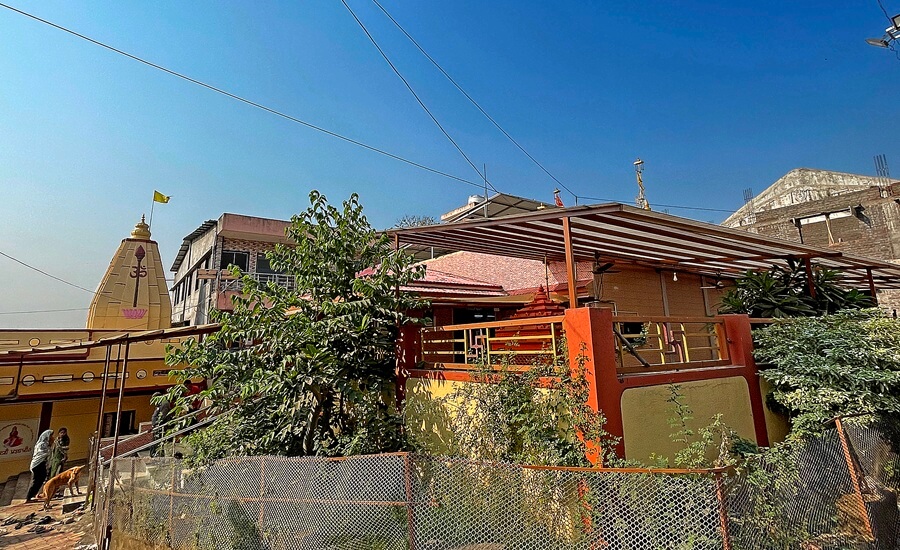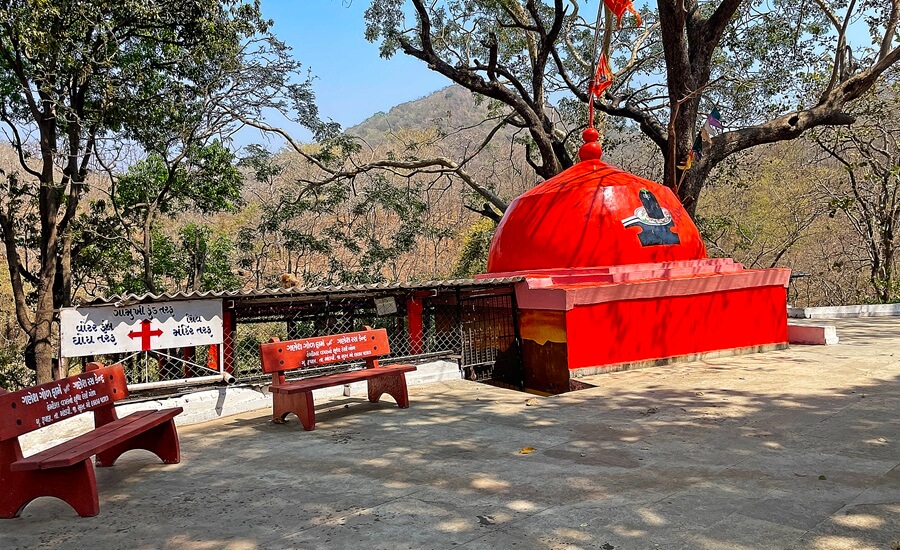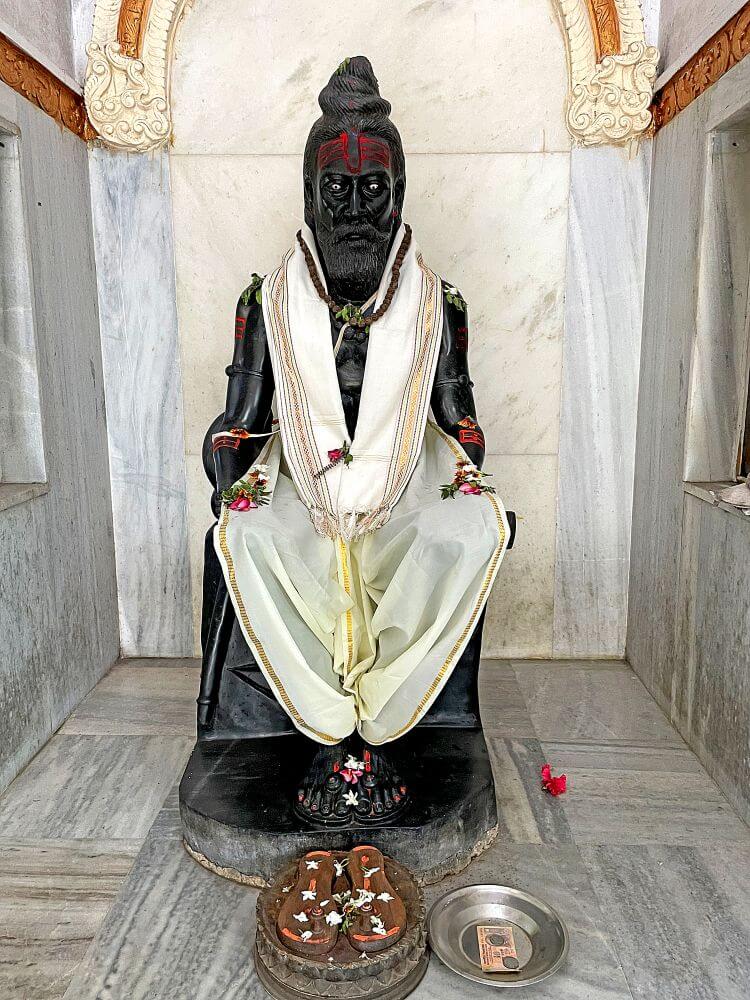
The only temple in South Gujarat dedicated to Parashuram – considered the sixth incarnation of Vishnu and the creator of the land stretching from Bhrigukachchha (Bharuch) to Kerala – is located at Gunsada. Built in the style of a water-temple (Jal Mandir), it stands near a Hanuman temple. These temples, distinctly influenced by Dravidian architectural style, are nestled atop a hill surrounded by dense greenery. The temples were founded by the renowned industrialist Baburao Parkhe from Gujarat. With picturesque natural surroundings, beautiful temples and delightful gardens, this place has become a center of attraction for devotees and tourists alike.
According to mythology, Haihayas were an ancient dynasty, established by Sahasrajit, son of Yadu, the son of Yayati. Their capital was Mahishmati city (modern Maheshwar) on the banks of the Narmada River in Malwa. Parshuram belonged to the Bhargava lineage residing in Anarta, Gujarat. Bhargav served as priests to the Haihayas and were granted immense wealth and riches by King Krtavirya. However, since Krtavirya’s sons received little from the Bhargavs, they harassed them. Jamadagni Rishi, an ancestor of the Bhargavs, was Parshuram’s father. Once, King Krtavirya visited Jamadagni’s ashram with an army in Parshuram’s absence and forcibly took away the divine cow Kamadhenu from him. 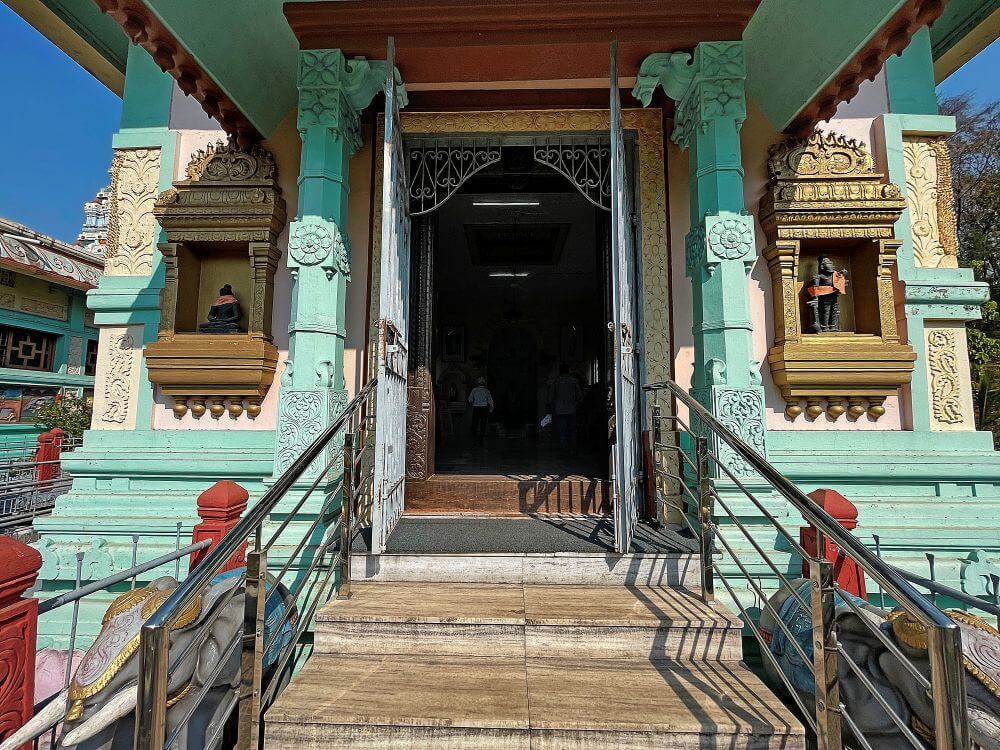 This led to a violent conflict between the Haihayas and Bhargavs.
This led to a violent conflict between the Haihayas and Bhargavs.
In the ensuing battle, Parshuram killed Krtavirya’s son Arjun. Subsequently, Arjun’s sons murdered Jamadagni. Angered by this, Parshuram formed a coalition against the Haihayas with kingdoms like Vaishali, Videha, Kashi, Kanyakubja and Ayodhya and annihilated them. It is said that Parshuram fought 21 battles against royal powers or defeated Kshatriyas 21 times to reclaim their kingdoms. Afterward, he donated land to atone for this sin as instructed by Rishi Kashyapa. Following Kashyapa’s guidance, Parshuram moved southward to Mahendragiri mountain.
Legend says Parshuram asked the sea for land while residing on Mahendragiri. When the sea denied him, he shot an arrow forcing the sea to retreat from Kutch to 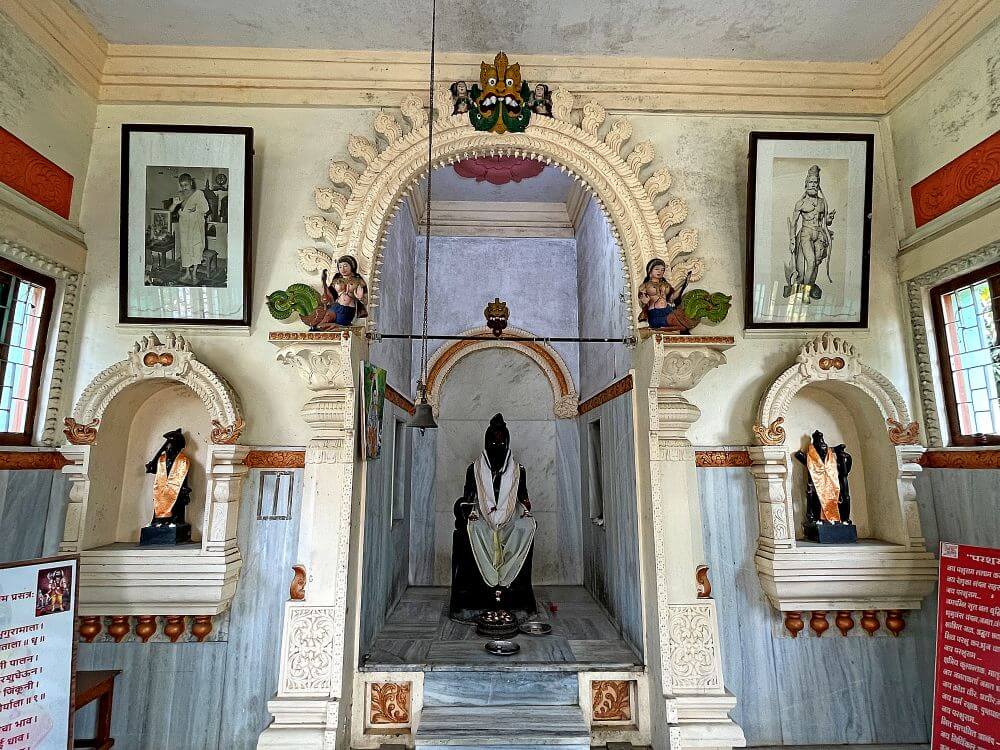 Kanyakumari, creating land six yojanas wide and 400 yojanas long, known as Saptakonkan. According to Sahyadri Khanda, this included Kerala, Tulunga, Saurashtra, Konkan, Karhat, Karnata and Barbara. The medieval region between the Tapi River and Vasai was called Barbara.
Kanyakumari, creating land six yojanas wide and 400 yojanas long, known as Saptakonkan. According to Sahyadri Khanda, this included Kerala, Tulunga, Saurashtra, Konkan, Karhat, Karnata and Barbara. The medieval region between the Tapi River and Vasai was called Barbara.
Many temples of Lord Parshuram exist along India’s western coast from Bharuch in Gujarat to Kerala and the Gunsada temple is among Gujarat’s notable temples. This temple was established by the renowned Gujarati industrialist and owner of the Central Pulp Paper (CPM) mill, Malhar Sadashiv alias Baburaoji Parkhe, inspired by his guru Gajanan Maharaj of Shivpuri (Akkalkot). A scholar of the Vedas, Baburaoji practiced and promoted the Agnihotra lifestyle and authored spiritual texts, notably the ‘Ramayashogatha’, which has over 550 pages based on Lord Parshuram’s life. 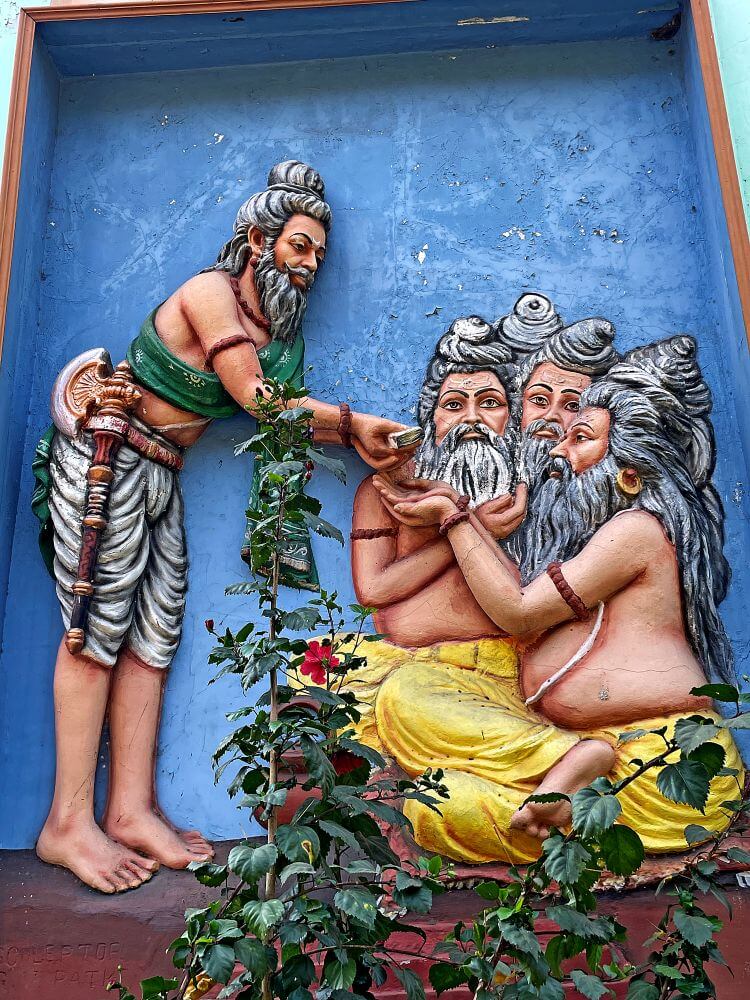 He chose a 27-acre location near a small pond atop a hill for these temples. Maharaj Gajanan blessed the spot known as ‘Shri Shila’. A golden brick and symbols of the Navagrahas (nine planets) were placed in the temple’s foundation. On January 10th, 1980, a grand ceremony was held where Gajanan Maharaj installed Parshuram’s idol in this temple along with an Agnipatra (sacred vessel) at the nearby Hanuman temple. After CPM mill became J.K. Paper Limited, beautiful gardens were created around the temple.
He chose a 27-acre location near a small pond atop a hill for these temples. Maharaj Gajanan blessed the spot known as ‘Shri Shila’. A golden brick and symbols of the Navagrahas (nine planets) were placed in the temple’s foundation. On January 10th, 1980, a grand ceremony was held where Gajanan Maharaj installed Parshuram’s idol in this temple along with an Agnipatra (sacred vessel) at the nearby Hanuman temple. After CPM mill became J.K. Paper Limited, beautiful gardens were created around the temple.
A concrete stairway leads from the main road through a gated entrance. On ascending, visitors first see the colorful spires of the temples situated in a hollow on the hill. Another grand entrance with a small bridge leads to three adjacent temples built on pillars.
The Hanuman temple, first in line, features a large two-story hall and a sanctum. The temple has a flat ceiling with windows around the central part of the walls. The sanctum has a three-tiered spire topped by an Amalaka and pinnacle, adorned with small towers and various deity sculptures. The intricate design and colorful artistry make this temple visually stunning.
Entering the hall after climbing five steps, visitors see a small fire altar and a large marble pillar (Agni Stambha) with a fire vessel atop. 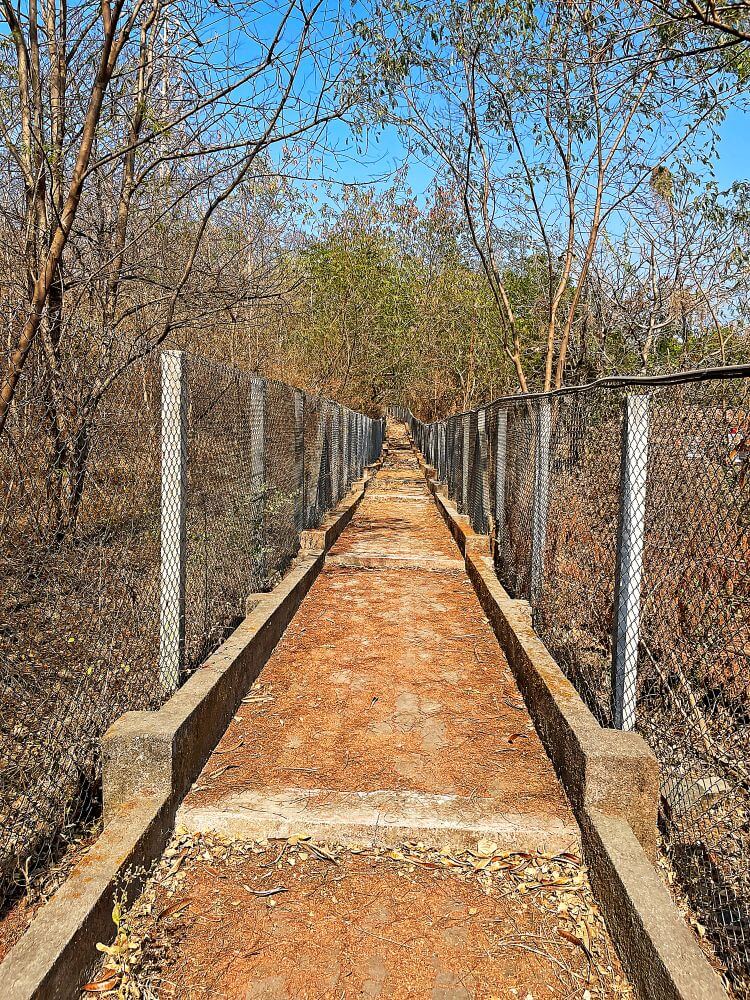 Hanuman’s idol with the Dronagiri mountain in his right hand, a mace in the left and standing over a demon is placed on a high pedestal.
Hanuman’s idol with the Dronagiri mountain in his right hand, a mace in the left and standing over a demon is placed on a high pedestal.
Adjacent to this temple is the temple of Kashta Ganesh (Wooden Ganesha). It is a small temple consisting of a modest assembly hall (Darshan Mandap) and a sanctum (Garbha Griha). The ceiling of the assembly hall, supported by carved pillars, features sculptures of two attendants (Ganas) at the front corners and a sculpture of a mouse (Mushak) at the center. The temple’s circular spire has idols of Ganesh carved on all four sides. Outside the assembly hall, on a high platform, stands a large sculpture of Mushak. Inside the sanctum, placed on a wooden platform, is an uncarved wooden idol of Ganesh, covered with vermilion. It is said that this idol was discovered during the temple’s construction.
After paying homage at Ganesh’s shrine and moving forward leads one to Parshuram’s temple which mirrors Hanuman’s temple. Entering through ornately carved wooden doors into this assembly hall reveals idols of Vishnu, Narasimha, Vamana and Sri Ram positioned at each corner. On the left side adorned with carvings is Gajanan Maharaj’s black-and-white photograph while on the right is an idol of Parshuram seated on his throne made from black marble stone sculpted by artisans from Jaipur.
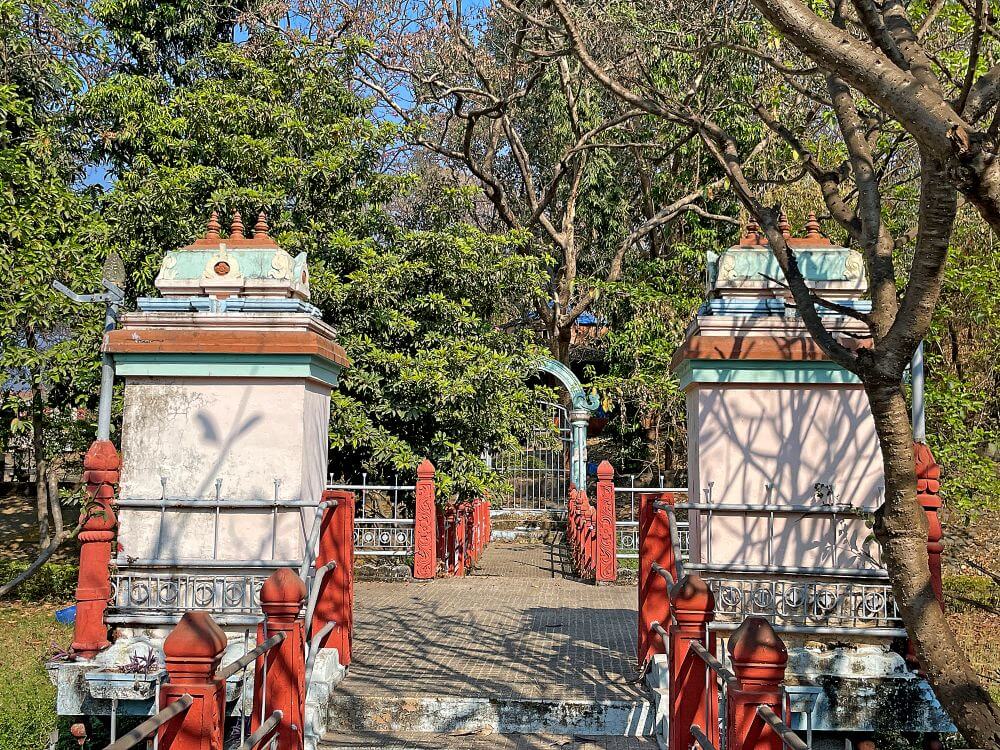 The shikhara (spire) of the Parashuram temple features intricate carvings, and various idols of deities have been sculpted here. In the niches on the temple’s outer walls, there are idols of some incarnations of Vishnu. On the outer walls of the sabhamandapas (assembly halls) of the Hanuman and Parashuram temples, numerous bas-reliefs have been installed. These include scenes from the ancient lives of sages, depictions of early human life, a sculpture of Nandi from the Indus Valley Civilization. Remarkably, even an image of Jesus Christ and a scene depicting the Ten Commandments received by Moses have been installed there.
The shikhara (spire) of the Parashuram temple features intricate carvings, and various idols of deities have been sculpted here. In the niches on the temple’s outer walls, there are idols of some incarnations of Vishnu. On the outer walls of the sabhamandapas (assembly halls) of the Hanuman and Parashuram temples, numerous bas-reliefs have been installed. These include scenes from the ancient lives of sages, depictions of early human life, a sculpture of Nandi from the Indus Valley Civilization. Remarkably, even an image of Jesus Christ and a scene depicting the Ten Commandments received by Moses have been installed there.
In front of these temples rests an enormous cannon while further down lies a beautiful garden featuring fountains. Behind these temples stands another Shiv temple accessed via about twenty steps where one can find a banyan tree extending beyond its roof alongside Nandi sculptures made from marble facing stone Shiv idols adorned with large bronze serpents raised above them.
The complex also includes an altar for Yagnashala (sacrificial site) where festivals like Ram Navami, Parshuram Jayanti, Guru Purnima are celebrated enthusiastically every year. January 10th marks an annual celebration day for this temple.
